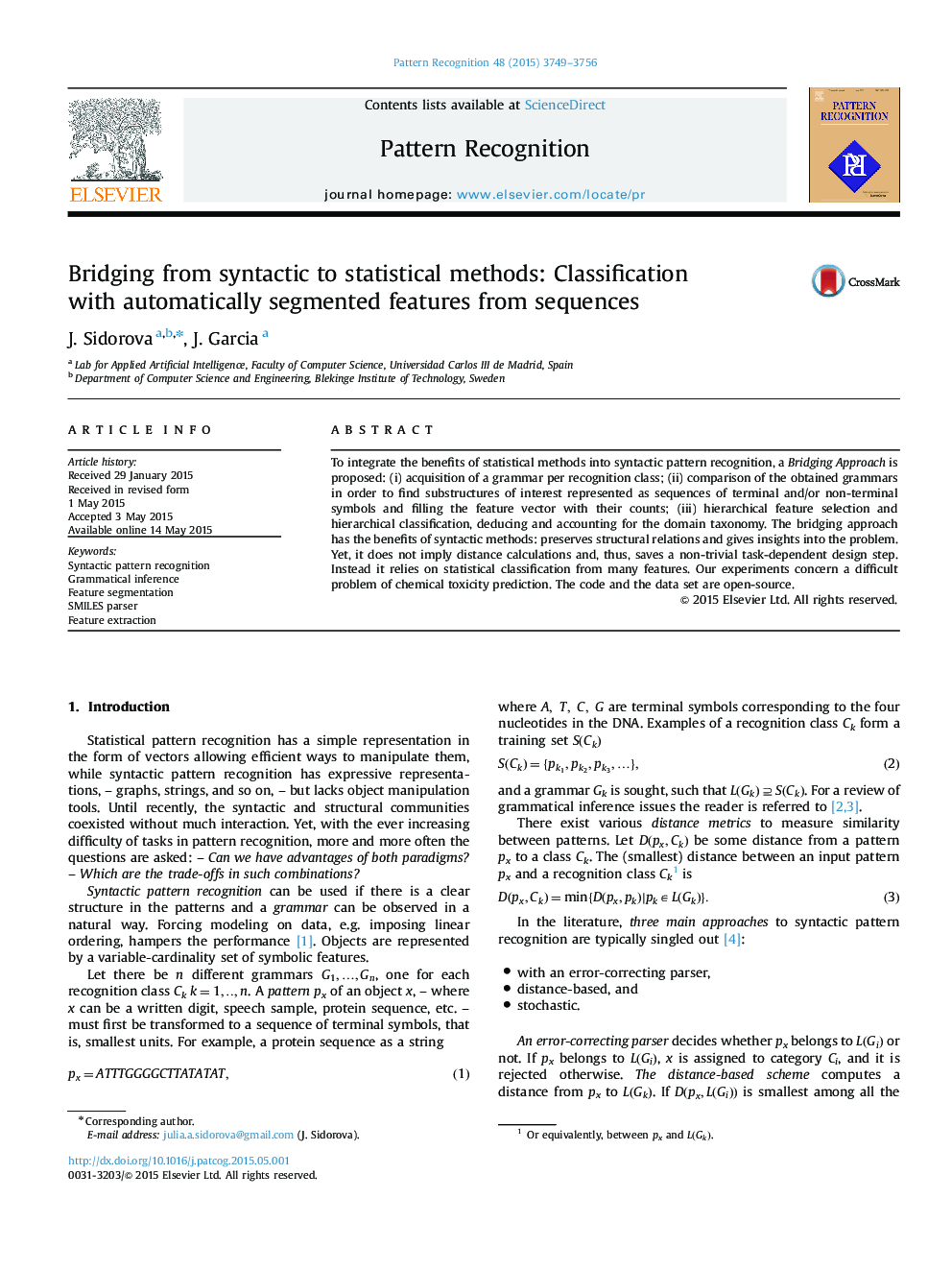| Article ID | Journal | Published Year | Pages | File Type |
|---|---|---|---|---|
| 529890 | Pattern Recognition | 2015 | 8 Pages |
•Bridging approach is a hybrid of syntactic and statistical methods.•Like the syntactic paradigm, it preserves hierarchical relations, gives insights, etc.•It does not require task-dependent distance calculations.•Experiments concern in silico toxicity prediction.•The code and the database are open-source.
To integrate the benefits of statistical methods into syntactic pattern recognition, a Bridging Approach is proposed: (i) acquisition of a grammar per recognition class; (ii) comparison of the obtained grammars in order to find substructures of interest represented as sequences of terminal and/or non-terminal symbols and filling the feature vector with their counts; (iii) hierarchical feature selection and hierarchical classification, deducing and accounting for the domain taxonomy. The bridging approach has the benefits of syntactic methods: preserves structural relations and gives insights into the problem. Yet, it does not imply distance calculations and, thus, saves a non-trivial task-dependent design step. Instead it relies on statistical classification from many features. Our experiments concern a difficult problem of chemical toxicity prediction. The code and the data set are open-source.
